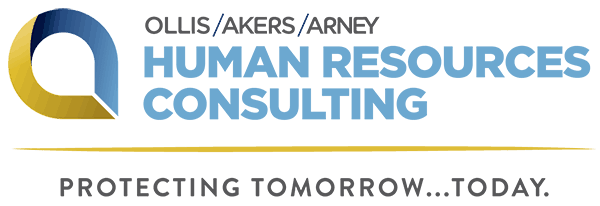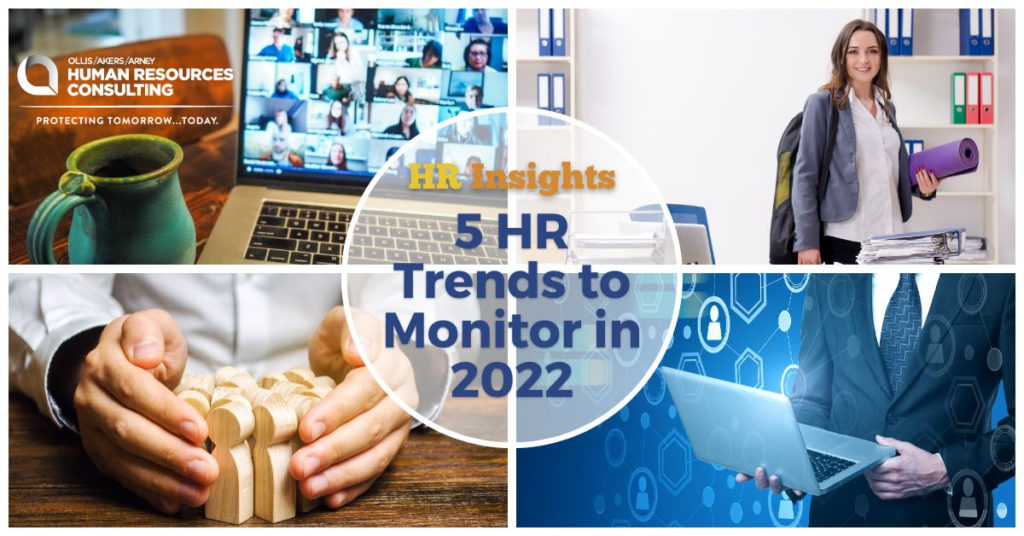Human resources (HR) departments are given more responsibility each year, often with budgets that don’t match these changes. As a result, HR teams must constantly innovate and stay on top of trends to remain competitive in today’s labor market.
This article highlights five HR trends for employers to follow in 2022.
1. Hybrid Workplace Sustainability
At this point in the pandemic, it appears the hybrid workplace is here to stay for many employers. According to a Gartner survey, 90% of HR leaders expect that at least some of their employees will work remotely after the pandemic. As such, many employers are shifting their perspective of hybrid work from a novelty to the new standard in 2022. This means adapting and tailoring policies and processes to support hybrid work and equally accommodating all employees. For example, employee communications could be available on a digital destination that everyone can access, or video meetings could become the new standard regardless of location.
2020 and 2021 focused on companies’ agility and adaptability to remote and hybrid workplaces. Now, organizations are shifting their focus toward creating a sustainable work model that meets the needs of both their business and employees in 2022 and beyond.
2. Attraction and Retention Amid Labor Shortages
Employee attraction and retention have become major obstacles for most employers and will likely continue through 2022. In fact, 67% of employers today consider attraction and retention somewhat of a challenge, according to Zywave’s 2021 Human Resources Benchmarking Overview. And that isn’t going to simply disappear.
Employers face several unique employment challenges in the current employment market, including the following:
- Workers fear contracting a severe case of COVID-19 on the job.
- Workers have built up comfortable savings to hold out for a desirable job.
- Workers reprioritized their job desires, such as scheduling flexibility, telework options, access to employee benefits, greater compensation and job fulfillment.
- Workers face continued caregiving duties, which require them to remain at home.
Industry research predicts that as the pandemic progresses, many employees will voluntarily leave their jobs for better compensation, benefits and workplace environment factors—such as work-life balance and remote or hybrid arrangements.
The Zywave survey revealed that employers are already planning to meet these employee needs and hold on to talent as the pandemic evolves. Employers are exploring the following strategies:
- 62%—Evaluating compensation
- 45%—Offering greater workplace flexibility
- 40%—Offering more upskilling and development opportunities
- 38%—Expanding benefits offerings
Many employers have leveraged these strategies to meet the current needs of employees. If organizations haven’t already started exploring strategies to do so, they will likely have to play catch-up quickly in 2022.
3. Increased Investment in HR Technology
Many employers are leveraging HR technology to automate their processes and create efficiencies. Technology doesn’t remove the human aspect from HR but rather enhances it. When HR departments use technology to create efficiencies, they can shift their focus from administrative tasks to the actual employees. Here are some of the latest trending HR technologies for 2022:
- Cloud-based workplace management
- Employee benefits administration
- Employee self-service portals
- HR automation
- Learning and development
- Onboarding and offboarding
- Virtual recruitment
Especially in today’s competitive market for top talent, employers could benefit from using technology to make the recruiting and hiring processes more efficient. Recruiters can use automation software and artificial intelligence to source, screen and schedule candidates. Additionally, chatbots are a popular tool to help employers better qualify candidates before any human interaction—and that trend will likely continue this year.
4. Growing Demand for New Skill Sets
Just as workplaces change, workers’ skills do too. According to Gartner data, the number of skills required for a single job increases by 10% per year, and new skills replace old ones. Organizations are embracing a dynamic approach to reskilling talent to shift vital employee skills and help develop skills as they become relevant. As an example of how the market has shifted, 1 in 3 skills in an average 2017 job posting in IT, finance or sales are already outdated.
The necessary skill sets will vary by organization and industry, but some employers are pursuing and supporting the following general proficiencies for potential and current employees:
- Communication—Employee communication skills are critical for emails and virtual meetings, especially in a remote or hybrid workplace. The goal remains to be effective and efficient, and top talent can communicate clearly and concisely with all stakeholders.
- Digital capabilities—Tying into the communication aspect, an employee should be open to using digital communication platforms at work and know when to use specific platforms.
- Emotional intelligence (EI)—Employees with higher EI typically navigate the workplace more effectively and are more resilient. Components of EI include empathy, motivation, self-awareness, self-regulation and social skills.
These skills were important before the pandemic but may not have been prioritized by many organizations. Organizations can seek out and hire candidates who demonstrate these skills but can also push current employees to convey or demonstrate these skill sets to leverage more work opportunities within the company. Moving through the new year, successful employers can shift their focus from roles to skills that can make the organization competitive and innovative.
5. Continued Focus on Employee Health and Well-being
Regardless of worksite location(s), employee health and safety will remain a top concern and priority for both employers and employees. To ensure employees feel safe in the workplace, employers can accommodate requests for remote work and offer on-site alternatives. Since the pandemic began, employers may have been more reactive but can and should shift to being proactive about employee well-being and support in 2022. From a holistic perspective, employee mental well-being will also remain a priority for organizations. It’s been nearly two years since the pandemic began, and many employees still struggle to find a healthy work-life balance. Caregiving, nurturing mental health and adjusting to remote work will likely remain top issues for employers to address. Employers that embed well-being across all essential people practices will likely best defend and support health and wellness for the workforce.
Summary
Employers can get ahead of the game by monitoring the trends that will impact the workplace and resonate with the current workforce. Many HR functions were quickly reimagined in 2021, but there are ways to elevate those strategies to be sustainable in 2022 and beyond.
Reach out to the Ollis/Akers/Arney HR Team for more guidance on these topics and other workplace trends.
This HR Insights is not intended to be exhaustive nor should any discussion or opinions be construed as professional advice. © 2022 Zywave, Inc. All rights reserved.






